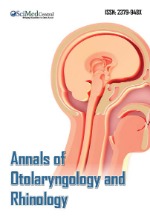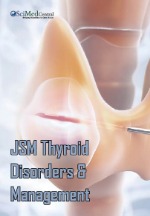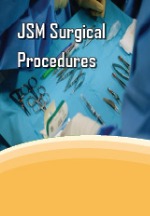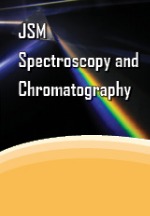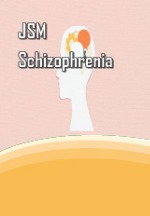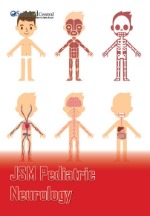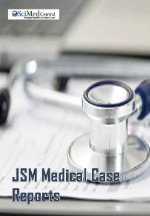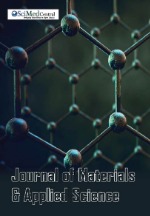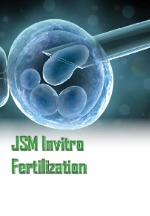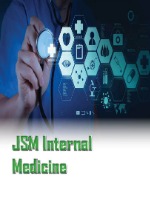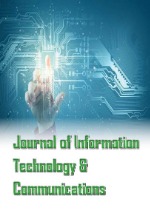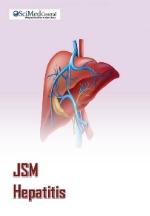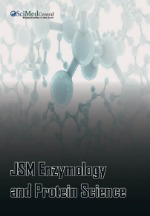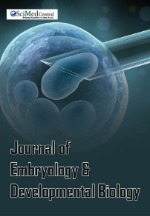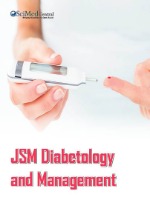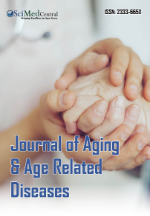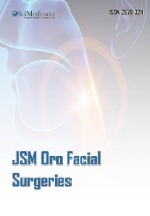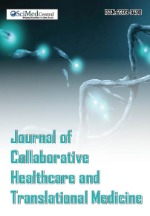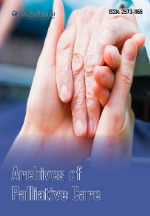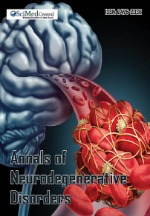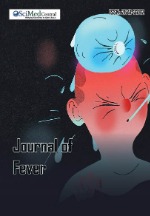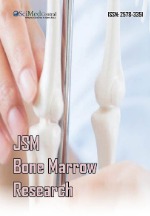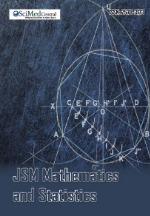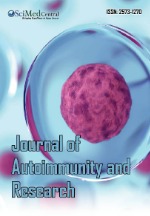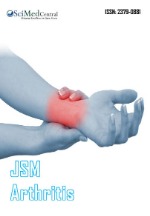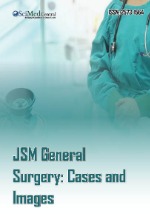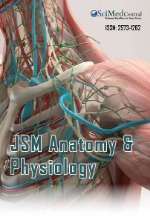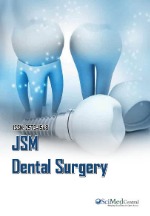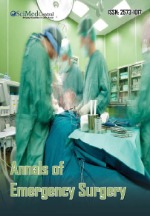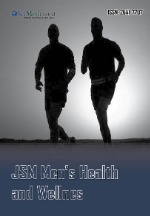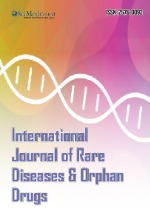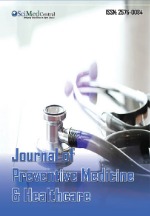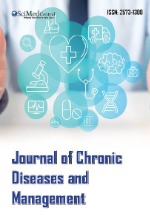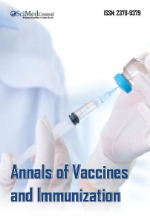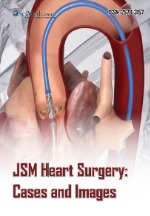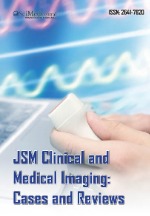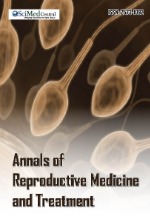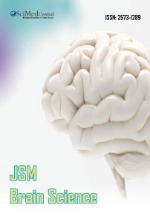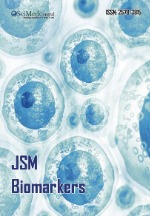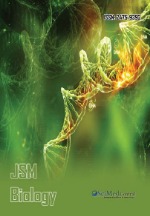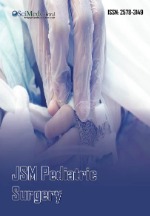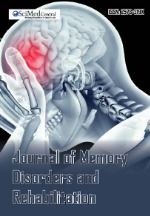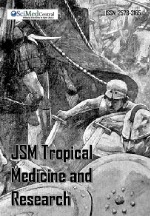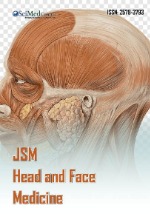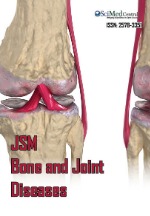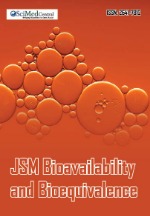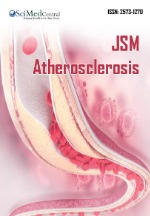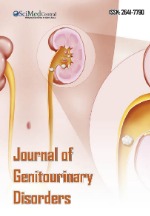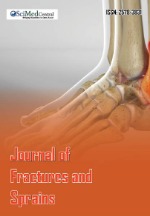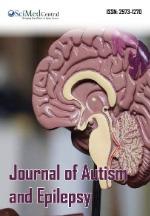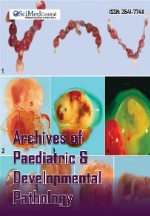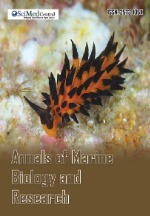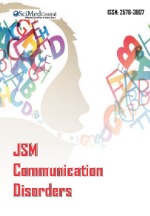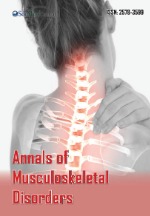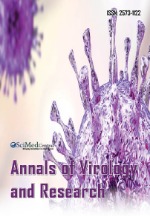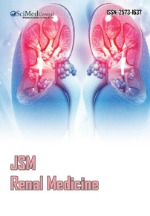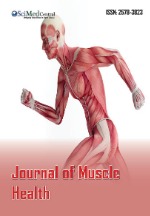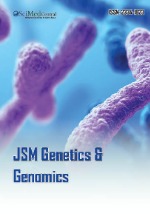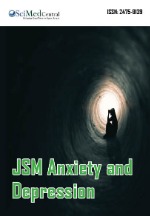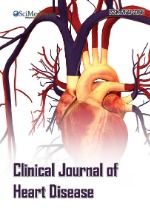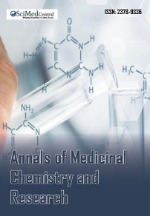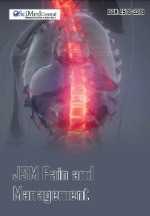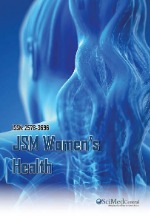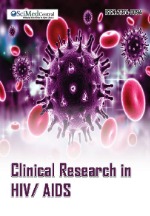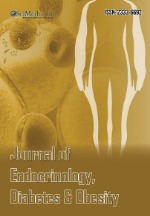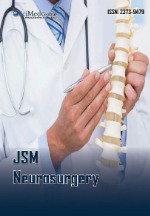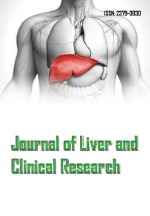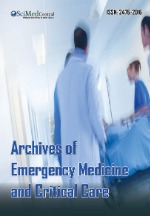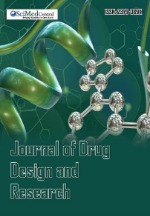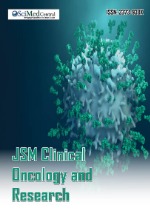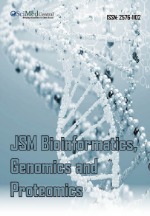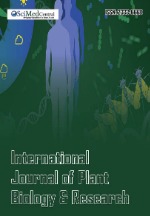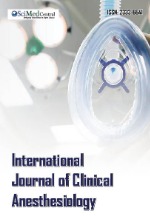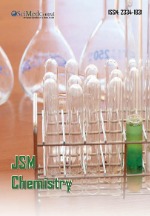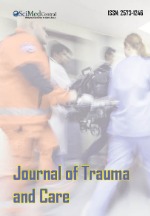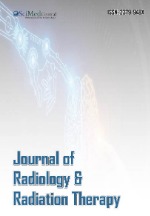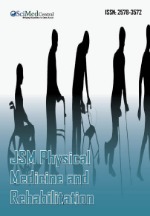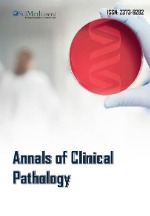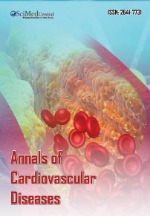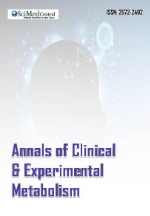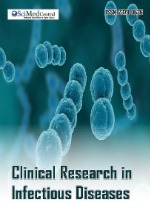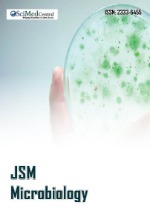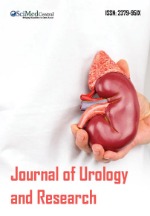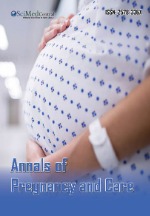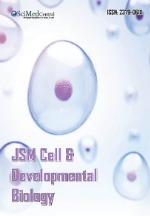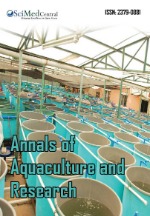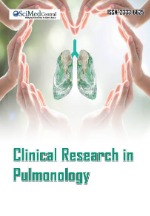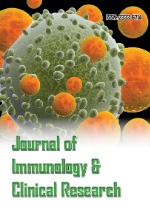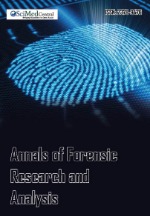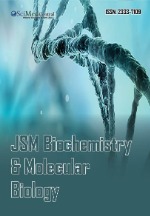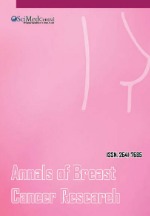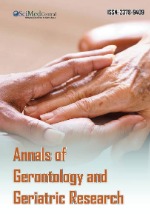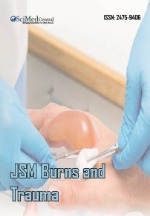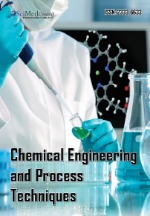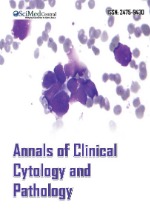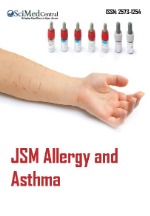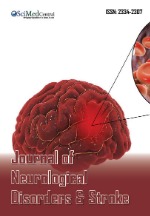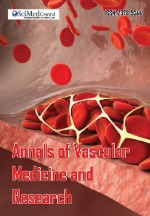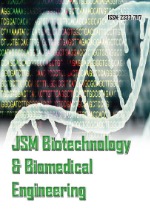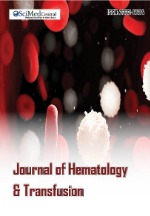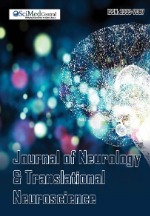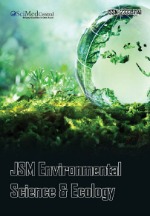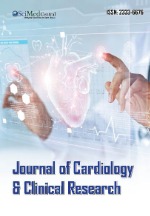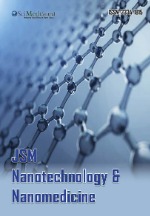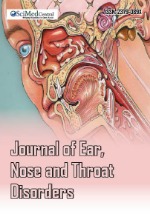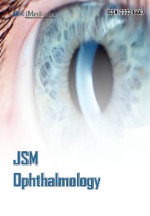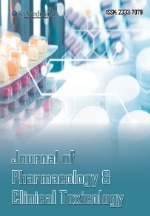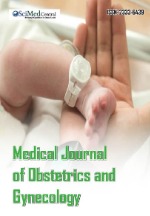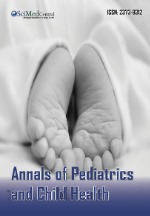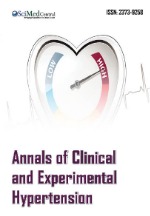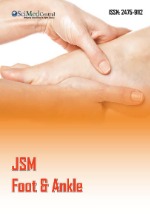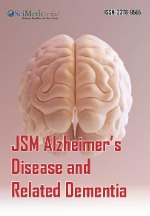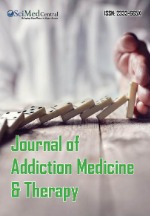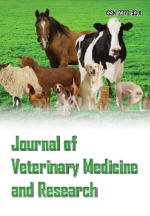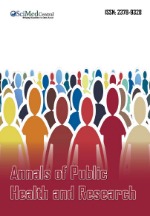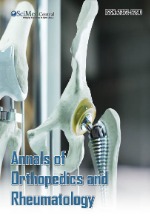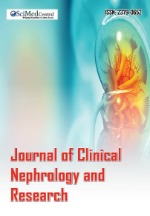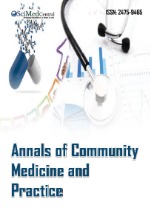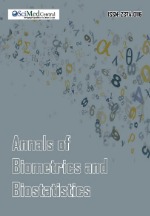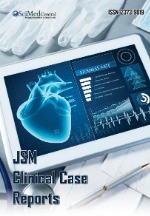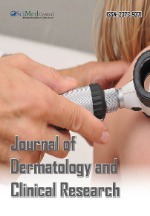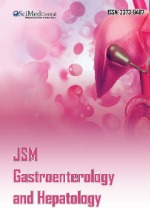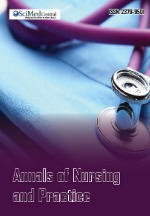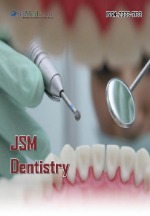Estimation of Gross Alpha and Beta and to Calculate AEDE, AGDE and ELCR in Mubi North Metropolis
- 1. Adamawa State University Nigeria, Nigeria
Abstract
A study was carried out to estimate the gross alpha and beta radionuclide activity in groundwater sources within Mubi North metropolis, Adamawa State. Five water samples were collected from residential areas and analyzed using the Protean Instrument Corporation (PIC) MPC 2000DP, a single-channel proportional counter. The results for gross alpha radioactivity across the five locations were 0.066 ± 0.026, 0.0098 ± 0.014, 0.059 ± 0.025, 0.182 ± 0.040, and 0.049 ± 0.023 Bq/L, while gross beta radioactivity levels were 4.374 ± 1.19, 7.791 ± 1.21, 10.21 ± 1.23, 1.564 ± 1.17, and 0.654 ± 1.16 Bq/L for Shagari Locust borehole near Jumma’a mosque, Wurogude behind river borehole, ADSU Faculty of Management tap water, Lokuwa borehole near the Emir’s palace, and Federal Polytechnic Mubi water reservoir, respectively. The findings revealed that Lokuwa borehole recorded the highest gross alpha activity, while ADSU Faculty of Management tap water had the highest gross beta activity. Most of the sample locations exceeded the World Health Organization’s (WHO), recommended alpha activity limit of 0.5 Bq/L, with only the Federal Polytechnic Mubi reservoir showing gross beta levels below the WHO guideline of 1.0 Bq/L. This indicates that, with the exception of the Federal Polytechnic Mubi reservoir, the other groundwater sources may not be suitable for drinking. Additionally, three radiological parameters were calculated: the annual effective dose equivalent (AEDE), the annual gonadal dose equivalent (AGDE), and the excess lifetime cancer risk (ELCR). ELCR estimates the likelihood of developing cancer over an average lifespan of 70 years due to radiation exposure. The computed results were AEDE (a and b): 0.0749/12.024 mSv/y, AGDE (a and b): 0.1873/60.14 mSv/y, and ELCR (a and b): 0.000262/0.042, respectively. The study concluded that the levels of gross alpha and beta activity in the water sources were significantly below the 100 Bq/L safety limits set by the International Commission on Radiological Protection (ICRP) and WHO for drinking water. Therefore, the radiation levels in these groundwater sources are unlikely to pose significant health risks to the local population.
KEYWORDS
- Gross, Alpha (α); Beta (β); Radiation; Counters; Effective; Equivalent
CITATION
Ibrahim A (2024) Estimation of Gross Alpha and Beta and to Calculate AEDE, AGDE and ELCR in Mubi North Metropolis. J Cancer Biol Res 11(2): 1149.
INTRODUCTION
The research on radioactive radionuclides in the environment, especially via the measurement of gross alpha and beta radiation, is a critical component of environmental monitoring. These radiation particles are significant due to their potential health risks, especially in regions where human activities or natural processes increase their presence in the environment. Gross alpha and beta radiation are types of ionizing radiation that arise from both natural and anthropogenic sources. Alpha particles, consisting of two protons and two neutrons, are large and heavily charged, while beta particles are smaller, consisting of high- energy electrons or positrons. Although alpha particles are less penetrating compared to beta particles, both can cause significant harm when ingested or inhaled [1].
In many regions of the world, including Nigeria, there is an increasing concern about the levels of environmental radiation due to both natural geological formations and human activities such as mining, agriculture, and industrial processes [2]. The Mubi North Metropolis, located in Adamawa State, Nigeria, is one such area where the presence of these radionuclides can potentially pose health risks to the local population. This necessitates a thorough evaluation of radiation levels, specifically gross alpha and beta radiation, to better understand the potential exposure risks. The growing population in Mubi North and its proximity to natural and human-induced radiation sources, such as local mining operations and agricultural practices, make it a suitable location for such a study [3].
To quantify the radiological impact on the population, several important indices are used in environmental radiation studies. These include the Annual Effective Dose Equivalent (AEDE), the Annual Gonadal Dose Equivalent (AGDE), and the Excess Lifetime Cancer Risk (ELCR) [1].
- AEDE (Annual Effective Dose Equivalent): is a measure that represents the dose of radiation a person is exposed to annually from both alpha and beta particles. It is critical for determining the potential health effects of radiation exposure over time [4].
- AGDE (Annual Gonadal Dose Equivalent): focuses specifically on the radiation dose to the reproductive organs. This is an important metric, as exposure to radiation in these organs can lead to genetic mutations and long-term hereditary effects.
- ELCR (Excess Lifetime Cancer Risk): is another crucial parameter, used to estimate the increased probability of developing cancer over a lifetime due to radiation exposure. By evaluating ELCR for alpha and beta particles, one can assess the long-term cancer risks posed by environmental radiation [5].
MATERIALS AND METHODS
The materials, the reagents and the analysis are showed below [7].
Apparatus
The following laboratory equipment was employed in the analysis:
- Laboratory beakers
- Petri dishes
- Hot plate
- Infrared radiator lamp
- Digital weighing balance
- Planchets
- Cotton wool
- GPS map
- 2-liter polyethylene containers
- Fume cupboard
Reagents
The reagents used included:
- Acetone
- Vinyl acetate
- Nitric acid (HNO?)
Sampling Procedure
A random sampling procedures was adopted for this research, where five groundwater samples were collected from different locations within Mubi North metropolis. The collection sites were:
- Shagari locust bore hole close to jumma’a mosque.
- Wurogude behind river bore hole.
- ADSU faculty of management tap water.
- Lokuwa bore hole adjacent emir palace.
- Federal polytechnic Mubi water reservoir.
All samples were collected from boreholes and treated with nitric acid to preserve the radionuclides.
Sample Collection Procedure
The water samples were collected directly into 2-liter polyethylene containers that had been thoroughly washed and rinsed with the water to be sampled. To each sample, 10 ml of concentrated nitric acid (HNO?) was added to reduce the pH to below 2, preserving the radionuclides and preventing their adsorption onto the container walls [8]. Proper care was taken to avoid stagnant water, and lake water samples (if collected) were taken away from shorelines, following WHO guidelines [9]. For borehole water, the taps were run for three minutes at full capacity to purge any stagnant water before collection.
Sample Preparation
The water samples were prepared and analyzed at the Centre for Energy Research and Training (CERT), Ahmadu Bello University, Zaria, Kaduna State. Each sample was acidified with 10 ml of nitric acid immediately after collection to reduce the pH, prevent precipitation, and minimize absorption of radionuclides on the container walls [10].
Evaporation Process
The equipment used, including beakers, crucibles, planchets, and spatulas, was thoroughly cleaned, rinsed, and sterilized with acetone. A 500 ml aliquot of each water sample was measured into a beaker and placed on a hot plate at a temperature just below boiling point to allow gradual evaporation, ensuring no excessive loss of the residue. The remaining 50 ml was transferred to a petri dish and evaporated to dryness under an infrared lamp, a process known as surface drying [11].
The initial weight of the empty petri dish was recorded, and the weight of the dish with the residue was measured using a digital analytical weighing balance. For samples with residues greater than or equal to 0.0770 g, the sample efficiency was considered 100%. For samples with residue less than 0.0770 g, the efficiency was calculated using the following formula;
Sample eff. = Weight of residue / 0.0770g X 100% (1)
Sample Analysis
The analysis followed the International Standards Organization (ISO) procedures ISO 9696 and ISO 9697:2014E for measuring gross alpha (α) and gross beta (β) activity in water samples. This method involves evaporating a known volume of water to dryness and measuring the activity of the residue, providing a screening technique for gross alpha and beta radioactivity in. For gross alpha radiation, special attention was given to samples with high total dissolved solids (TDS), as this could affect the sensitivity of the method.
Detection and Counting
The gross alpha and beta activity in the samples was measured using a proportional counter system, the MPC2000B- DP, designed for detecting gross alpha and beta radiation. Each sample was placed on the detector and counted for 2700 seconds (45 minutes). The data obtained provided a detailed measure of the radionuclide activity in the water samples.
RESULT AND DISCUSSION
The Three Radiological Parameters
There are 3 radiological risk parameters. These include the annual effective dose equivalent (AEDE), the annual gonadal dose equivalent (AGDE) and the excess lifetime cancers risk (ELCR).
The Annual Effective Dose Equivalent is given by the Relative
AEDE = A (α, β) x Wc x F.D (2)
Where A (α, β) = activity concentrations of gross alpha and gross beta in Bq/L
WC= water consumed by a person in a year. (For an adult it is approximately 2litre a day, which is approximately to 730L in a year)
F.D (α,β) = activity to dose conversion factor for gross alpha and gross beta radiations It is assumed that the major contribution to AEDE due to ingestion of water from gross alpha radiation is radium – 226 and the major contribution to gross beta are pb – 210 and radium – 228. Activity dose conversion factor
F.D for radium 226 is 2.8 x 10-4 mSvy-1 for gross alpha radiation for radium 228 and pb – 210, dose conversion factor F.D = 6.7 x 10-4 mSvy-1 for beta radiation.
The AEDE for gross alpha and gross beta radiation of sample ID fils with alpha activities 0.0041Bq/L and beta activities 0.3554 Bq/L is given usiing equation 1 and are calculated as follows
AEDEα for Underground water samples
AEDEα = A (α) x WC x F.D (3)
AEDEβ (Beta) for Underground water AEDEβ = A (β) x WC x F.D
Annual Gonadal Dose Equivalent (AGDE)
Annual gonadal dose equivalent measures the dose of gross alpha and gross beta received by the gonadal surface cells as a result of exposure to radiation.
The computation of AGDE for gross α or gross β is given by
the formula:
AGDE = AEDE / R.W , F xT .W .F
Where R.W.F = Radiation weighing factor
T.W.F = Tissue weighing factor
R.W.F = 2 for α – activity 1 for β – activity
T.W.F = 0.20 (for both α and β activity)
The sum of AGDE for gross alpha and gross beta radiation is given as AGDET (α, β)
Si(a , b ) AEDE/ R.W , F xT .W .F (5)
Excess Lifetime Cancer Risk (ELCR)
The excess lifetime cancer risk is the probability of developing cancer over a lifetime at a given exposure level. We are assuming 70years as the average duration of life for humans. The excess lifetime cancer risk is calculated for gross alpha or gross beta, using the formula;
ELCR (α, β) = AEDE x DL x RF (6)
ELCR (α, β) = Σ (α, β) AEDE x DL x RF (7)
Where; DL = Average duration of life (estimated at 70years)
RF = Risk factor (Sv-1) which is fatal risk per sivert
For stochastic effect ICRP used RF = 0.5/sv equivalent to 5 x10-5/mSv for the public
The ELCRα for the first sample ID FISL is computed using (6) as follows (Table 1).
Table 1: Gross Alpha a and computed AEDE (α), AGDE (α), ELCR (α)
|
S/N |
Sample locations |
Alpha Activity (Bq/L) |
AEDEα (mSvy-1) |
AGDEα (mSvy-1) |
ELCRα |
|
1 |
Shagari locust bore hole close to jumma'a mosque. |
0.066 ± 0.026 |
0.014±0.04 |
0.034±0.010 |
4.753 x 10^-5 |
|
2 |
Wurogude behind river bore hole. |
0.0098± 0.0142 |
0.0020±0.003 |
0.00503±0.007 |
7.042 x 10^-6 |
|
3 |
ADSU faculty of management tap water. |
0.0591±0.0246 |
0.0120±0.0050 |
0.03018±0.0126 |
4.225 x 10^-5 |
|
4 |
Lokuwa bore hole adjacent emir palace. |
0.1821±0.0402 |
0.0372±0.00822 |
0.093±0.205 |
1.303 x 10^-4 |
|
5 |
Federal polytechnic Mubi water reservoir. |
0.0492±0.0232 |
0.010±0.00168 |
0.0025±0.0042 |
3.521 x 10^-5 |
The results of the study highlight significant findings regarding the activity concentration of gross alpha and beta radionuclides in groundwater sources across different locations in Mubi North Metropolis, Adamawa State. Among the sampled locations, Lokuwa borehole, adjacent to the Emir’s palace, recorded the highest activity concentration for both gross alpha and beta particles. The Annual Effective Dose Equivalent (AEDE), Annual Gonadal Dose Equivalent (AGDE), and Excess Lifetime Cancer Risk (ELCR) calculated for this location were also the highest [12].
Comparison with WHO Guidelines
According to the World Health Organization (WHO) guidelines for drinking water quality, the recommended maximum permissible limit for gross alpha activity is 0.5 Bq/L and for gross beta activity is 1.0 Bq/L (WHO, 2012). The Lokuwa borehole, although recording the highest concentrations of alpha and beta particles, had levels that were still below these WHO-recommended limits. This implies that, despite the elevated values compared to other sample sites, the radiological risk posed by the water from Lokuwa borehole remains within acceptable safety standards as far as these specific guidelines are concerned [12].
Research gaps
When comparing these results to studies conducted in other regions, a broader picture of environmental radiation can be drawn. For instance, a study conducted in Ibadan, Nigeria found that gross alpha activity in groundwater sources ranged between 0.04 and 0.12 Bq/L, while beta activity ranged from 0.06 to 0.58 Bq/L (Ajayi et al., 2009). The values from Lokuwa borehole, with alpha activity of 0.182 Bq/L and beta activity of 1.564 Bq/L, suggest higher radiation levels compared to the Ibadan study. This could be attributed to different geological formations or higher levels of anthropogenic activities such as mining or agricultural practices in the Mubi North region [14].
Similarly, in a study from Zaria, Nigeria, gross alpha and beta activity levels in drinking water sources ranged from 0.01 to 0.09 Bq/L and 0.07 to 0.92 Bq/L, respectively [15]. Again, the Lokuwa borehole results were higher, indicating that the Mubi North area may be subjected to different environmental or industrial factors that influence the concentration of radionuclides in groundwater. Despite these differences, all measured values remain below the WHO thresholds [11].
Radiation Hazard
Even though the Lokuwa borehole recorded the highest radiological parameters, the calculated AEDE, AGDE, and ELCR values remained within acceptable limits. The AEDE for alpha and beta particles in the Lokuwa borehole, for example, was found to be 0.0749 mSv/y and 12.024 mSv/y, respectively. These values are below the global public exposure limit of 1 mSv/y recommended by the International Commission on Radiological Protection (ICRP) [1], indicating that annual radiation exposure from consuming water from this source poses no immediate health risk.
The AGDE values calculated, however, show potential for more significant long-term effects, particularly in relation to reproductive organs. Given that gonadal tissues are more sensitive to radiation, continuous exposure over time could lead to genetic mutations and other hereditary effects. The Lokuwa borehole’s AGDE values for alpha particles were 0.1873 mSv/y, while for beta particles, it was significantly higher at 60.14 mSv/y. This points to a higher potential for reproductive health risks, particularly from beta particle exposure.
The ELCR for Lokuwa borehole, calculated at 0.000262 for alpha particles and 0.042 for beta particles, indicates the increased probability of developing cancer over a lifetime due to radiation exposure from this water source. While these numbers seem small, over a population and over time, the risks could accumulate, leading to noticeable health impacts. A similar study in Iran, for instance, found ELCR values ranging between 0.05 and 0.10, which are higher than those observed in the Mubi North study, emphasizing that while the risk from Lokuwa borehole is real, it remains relatively low when compared to other global cases (Table 2).
Table: Gross Beta and a computed AEDE (ß), AGDE (ß), ELCR (ß)
|
S/N |
Sample locations |
Beta Activity (Bq/L) |
AEDEß (mSvy-1) |
AGDEß (mSvy-1) |
ELCRß |
|
1 |
Shagari locust bore hole close to jumma'a mosque. |
4.374 ± 1.19 |
2.139±0.582 |
10.695±2.91 |
7.487 x 10^-3 |
|
2 |
Wurogude behind river bore hole. |
7.791± 1.21 |
3.811±0.592 |
19.055±2.96 |
1.334 x 10^-2 |
|
3 |
ADSU faculty of management tap water. |
10.21±1.23 |
4.994±0.602 |
24.97±3.01 |
1.748 x 10^-2 |
|
4 |
Lokuwa bore hole adjacent emir palace. |
1.564±1.17 |
0.765±0.572 |
3.825±2.86 |
2678x 10^-3 |
|
5 |
Federal polytechnic Mubi water reservoir. |
0.6536±1.16 |
0.319±0.567 |
1.595±2.835 |
1.117 x 10^-3 |
The study of radioactive contamination in groundwater, particularly through the measurement of gross alpha and beta radiation, is a vital aspect of environmental monitoring. Gross alpha and beta particles, which are types of ionizing radiation, pose potential health risks, particularly in areas where environmental exposure is increased by natural processes or human activities. According to the International Commission on Radiological Protection, alpha particles, which consist of two protons and two neutrons, have limited penetration but can be harmful when inhaled or ingested. Beta particles, on the other hand, are smaller and more penetrating, consisting of high-energy electrons or positrons, and can also cause significant biological damage upon entering the body [13].
MATERIALS AND METHODS
The materials and methods used in this study adhered to established international standards for radiological assessments in environmental samples.
Apparatus
The laboratory apparatus used included laboratory beakers, petri dishes, a hot plate, an infrared radiator lamp, a digital weighing balance, planchets, GPS maps, and 2-liter polyethylene containers. All instruments were sterilized using acetone to prevent contamination.
Reagents
The reagents used were acetone, vinyl acetate, and nitric acid (HNO?), which is crucial for preserving the water samples by preventing radionuclide adsorption and maintaining a low pH [4].
Sampling Method
A random sampling method was employed, and water samples were collected from boreholes across five locations in Mubi North. The locations included:
- Shagari locust borehole near Jumma’a Mosque.
- Wurogude borehole behind the river.
- ADSU Faculty of Management tap water.
- Lokuwa borehole adjacent to the Emir’s palace.
- Federal Polytechnic Mubi water reservoir.
Proper procedures were followed to ensure that stagnant water was not collected, and for borehole samples, the taps were run for three minutes to flush out any stagnant water [15].
Sample Preparation and Analysis
The water samples were analyzed at the Centre for Energy Research and Training (CERT), Ahmadu Bello University, Zaria. Samples were first acidified with 10 ml of nitric acid immediately after collection to reduce the pH, minimizing radionuclide precipitation and adsorption. The evaporation process was conducted on a hot plate at temperatures below boiling to avoid excessive residue loss, followed by surface drying under an infrared lamp. The dried samples were then weighed, and gross alpha and beta activities were measured using a single-channel proportional counter.
CONCLUSION
The concentrations of gross alpha and beta activity (Bq/L), along with the Annual Effective Dose Equivalent (AEDE), Annual Gonadal Dose Equivalent (AGDE), and Excess Lifetime Cancer Risk (ELCR), vary across the water samples collected from the community. This variation can be attributed to the uneven distribution of radionuclide deposits, differences in water transport, organic metabolism, and effluent discharge. The recorded levels of gross alpha and beta activity, AEDEs, AGDEs, and ELCRs in the study are higher compared to those reported in other regions of the country. The mean and average values of gross alpha and beta activity concentrations (Bq/L) were also calculated, as well as the total AEDE, AGDE, and ELCR for all samples. Despite these higher values, the results remain well below the maximum permissible limits recommended by the WHO and ICRP, indicating that the radiation levels are unlikely to pose significant health risks to the local population who rely on these water sources.
RECOMMENDATION
The results obtained in this study are significantly below the WHO and ICRP recommended screening levels of 100 Bq/L for both gross alpha and gross beta radioactivity in drinking water. Given that the values fall well within the permissible international standards, it is recommended that a regular environmental audit and monitoring program be established to ensure ongoing oversight, particularly in areas impacted by mining activities. Additionally, further investigations should be conducted, focusing on other relevant parameters such as sodium iodide thallium (NaI(Tl)) detection, neutron activation analysis (NAA), and elemental analysis of plants using soil samples from the community. These steps will provide a more comprehensive understanding of potential environmental impacts and help maintain water quality and safety.
REFERENCES
- Ajayi IR, Torto N, Tchokossa P, Popoola OM. “Natural radionuclides and hazards of rock samples collected from Southeastern Nigeria.” Radiation Protection Dosimetry. 2009; 135: 17-21.
- Anekwe E, Ojo S, Aliyu A. “Gross Alpha and Beta Activity Concentration in Drinking Water from Selected Areas of Zaria.” J Environm Protection. 2015; 6: 813-821.
- Ghaneian MT, Ehrampoush MH, Dehghani MH. Radiological Quality of Drinking Water in Yazd, Iran.” J Environ Health Sci Engineering. 2012; 9: 1-7.
- International Atomic Energy Agency (IAEA), Radiation Protection and Safety of Radiation Sources: International Basic Safety Standards, IAEA Safety Standards Series No. GSR Part 3. 2014.
- International Commission on Radiological Protection (ICRP), the 2007 Recommendations of the International Commission on Radiological Protection, ICRP Publication 103, Oxford: Pergamon Press, 2007.
- World Health Organization (WHO), Guidelines for Drinking-Water Quality, 4th ed., Geneva: WHO. 2012.
- International Atomic Energy Agency (IAEA), Radiation Protection and Safety of Radiation Sources: International Basic Safety Standards. IAEA. 2014.
- United Nations Scientific Committee on the Effects of Atomic Radiation (UNSCEAR), Report on Sources and Effects of Ionizing Radiation. 2010.
- International Atomic Energy Agency (IAEA), Environmental Radioactivity Monitoring in Nigeria. Annual Report. 2018.
- Health Physics Society. Radiation Dosimetry and Environmental Assessments. 2019.
- World Health Organization (WHO). Health Risks of Radiation Exposure. 2020.
- United States Environmental Protection Agency (EPA).”Radiation and Public Health. 2021.
- Nigerian Nuclear Regulatory Authority (NNRA). Radioactivity and Safety in Nigeria. 2022.
- International Commission on Radiological Protection (ICRP). The Use of Acid in Environmental Sampling. ICRP Publication. 2017.
- World Health Organization (WHO), Guidelines for Drinking-Water Quality, 4th ed., WHO, 2012.
- International Organization for Standardization (ISO). Water Quality-Measurement of Gross Alpha and Beta Radioactivity. 2014.


